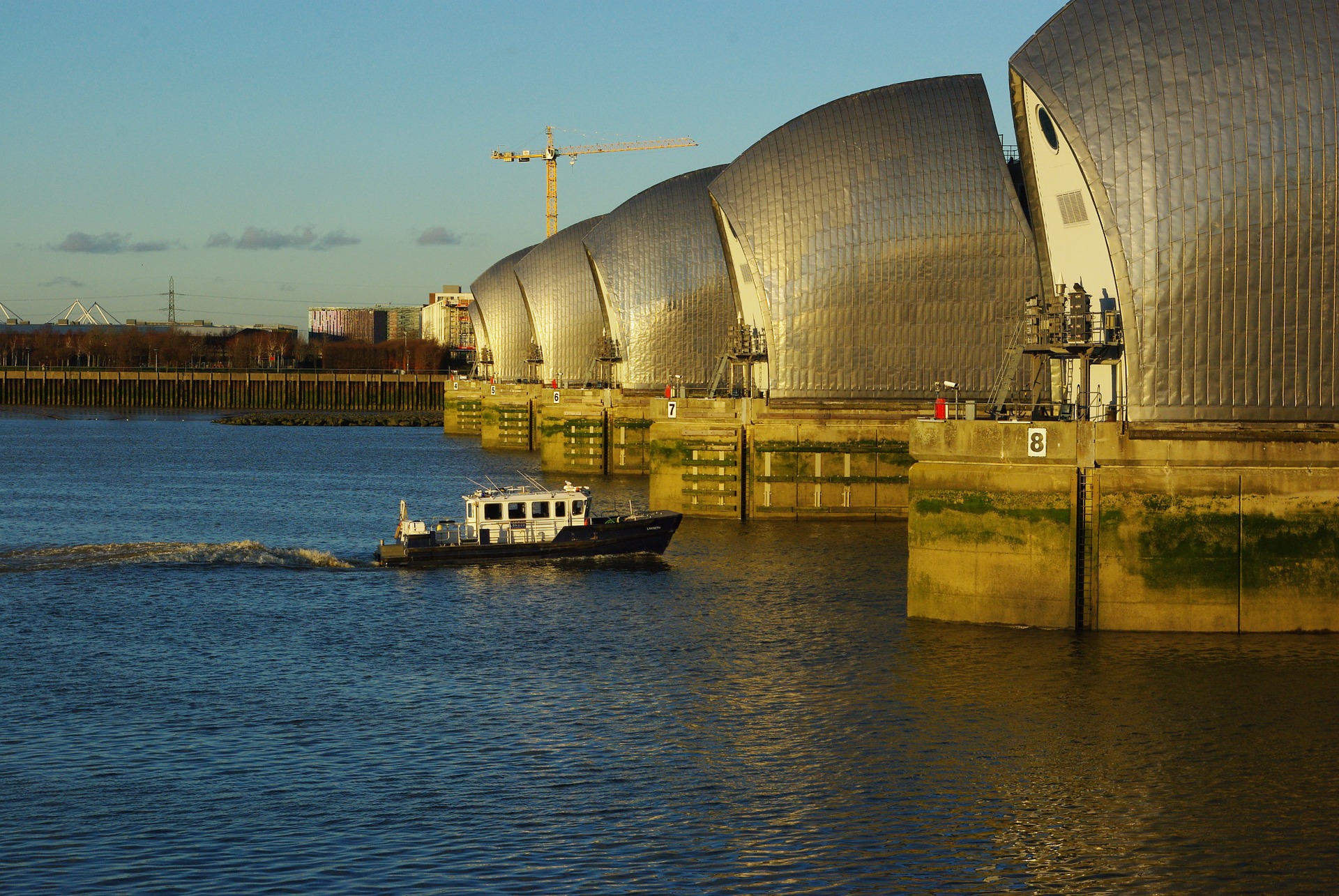Like giant conk shells rising out of the water, the Thames Barrier sits just east of Canary Wharf and provides an important service for the city. The barrier was designed and built to keep parts of Greater London from flooding in the case of storm surges or incredibly high tides coming from the North Sea. It is an incredible feat of modern engineering that’s functions and history are worth exploring. The barrier has been in operation since 1982, but its history goes back much further than that. Join us on a trip down the river of history to learn more about this London landmark.
Problems with flooding along the Thames have long plagued London. In modern history, the first major flood happened in 1927 when an exceptionally heavy snowfall melted. The melting snow, combined with heavy storms, resulted in the tide turning back on January 7. Floodwaters ran over the Thames Embankment and caused the Chelsea Embankment to collapse. Another flood took place a year later, but this only started people thinking about flood control measures. It wasn’t until the North Sea Flood of 1953 the real action was taken. The 1953 flood (caused by wind, low tide, and low pressure) destroyed 900 miles of coastline as the water breached sea walls in over 1,200 places. The flood was especially damaging to East London, resulting in 200 people becoming homeless and one casualty.
Sir Hermann Bondi’s 1966 report coming out of this catastrophe was an inciting factor in the construction of the Thames barrier. The 1953 flood had been evidence enough that London’s past solution of simply building higher and stronger walls along the River Thames simply wasn’t working. Bondi suggested a flood barrier with movable gates and in 1969, Charles Draper came up with a design for rotating gates and built a working model. Of course, with the speed at which government moves, it wasn’t until the Thames Barrier Flood Protection Act of 1972 that any action was taken towards construction. Work on the barrier began in 1974 and continued for another eight years until it was opened by Queen Elizabeth II in 1982.
In addition to the Thames Barrier, existing flood defenses downriver were strengthened. The final cost of the barrier and these additions was £534 million, or £1.6 billion in today’s money. And for all that expense, the Thames Barrier is comprised of ten gates that span 1700 feet across the water. Each gate is comprised of a hydraulic system that activates the lifting mechanism that moves the gates. The gates rotate to lay on the river bed when they are open, lifted up to create a solid steel wall to block incoming waters, and rotated slightly to control the amount of water moving into the river (called the underspill position). After low tide, the barrier is closed to create an empty reservoir that the river flow fills up, a process that takes 75-to-90 minutes.
While this really only affects the river by inches, those inches can be crucial during heavy storms, marking the difference between ground level and flooding someone’s home. The effect of the tides goes as far as twelve miles upriver to Molesey where the tide runs out. In case of a potential flood, the Thames Barrier flood closure is enacted when a combination of high tides forecast in the North Sea and high river flows at the tidal limit at Teddington weir, causing the barrier gates to close completely. Since the barrier was finished in 1982, this has happened 186 times. The barrier was expected to be used only 2-3 times per year, but as of the mid-2000s, it closes 6-7 times per year. It is unknown at this time what the future of the barrier will be considering concerns about climate change and the potential rising of water levels across the United Kingdom.
A Little Bit of London In Your Inbox Weekly. Sign-up for our free weekly London newsletter. Sent every Friday with the latest news from London!




WHAT shells??? haha